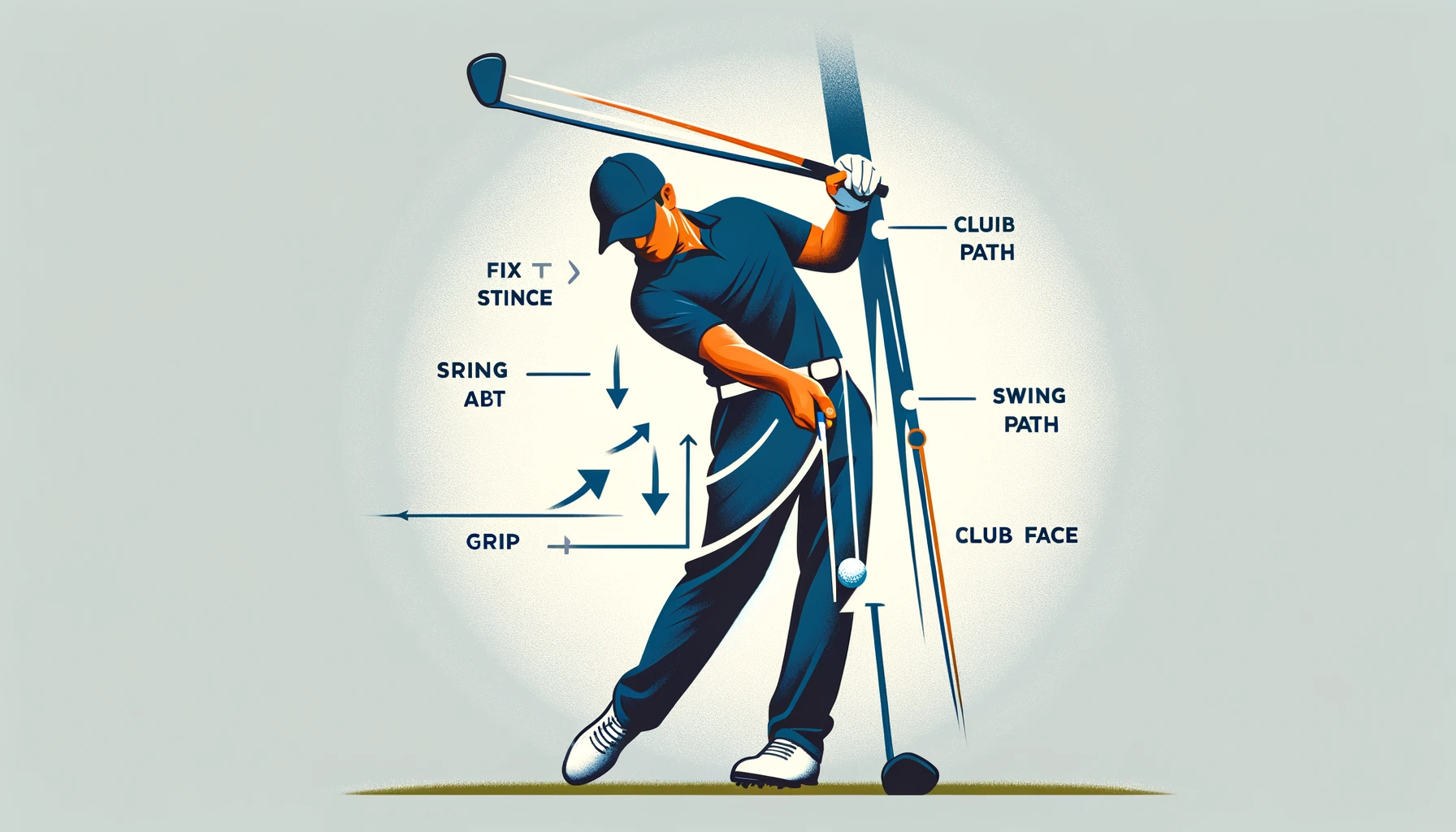Are you tired of your golf ball consistently slicing off target?
Fixing a slice in golf is a common challenge that requires a multi-faceted approach addressing grip, stance, swing path, and clubface angle.
Let’s dive in and explore the various strategies and techniques you can employ to straighten out your shots and improve your golf game.
How to Fix a Slice in Golf:
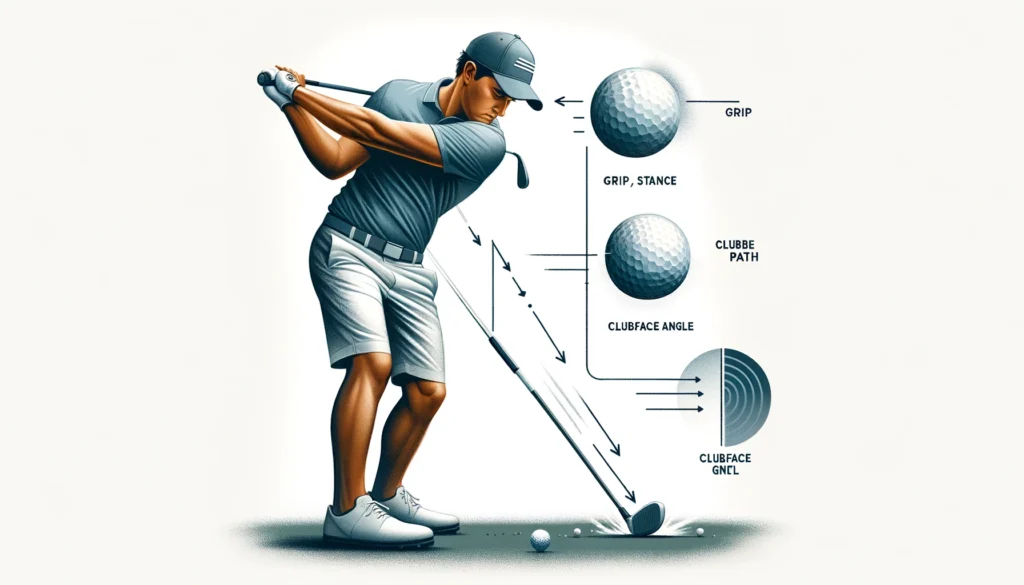
To fix a slice in golf, focus on correcting key aspects of your swing, including your grip, stance, swing path, and clubface angle at impact. Ensure your grip is neutral, your stance is square, your swing path is inside-out, and your clubface is square to the target at impact.
Practice drills to reinforce these corrections and strengthen key golf muscles. In the following sections, we’ll explore each of these elements in detail, providing you with actionable tips and strategies to eliminate your slice and improve your golf game.
Understanding What Causes a Slice in Golf
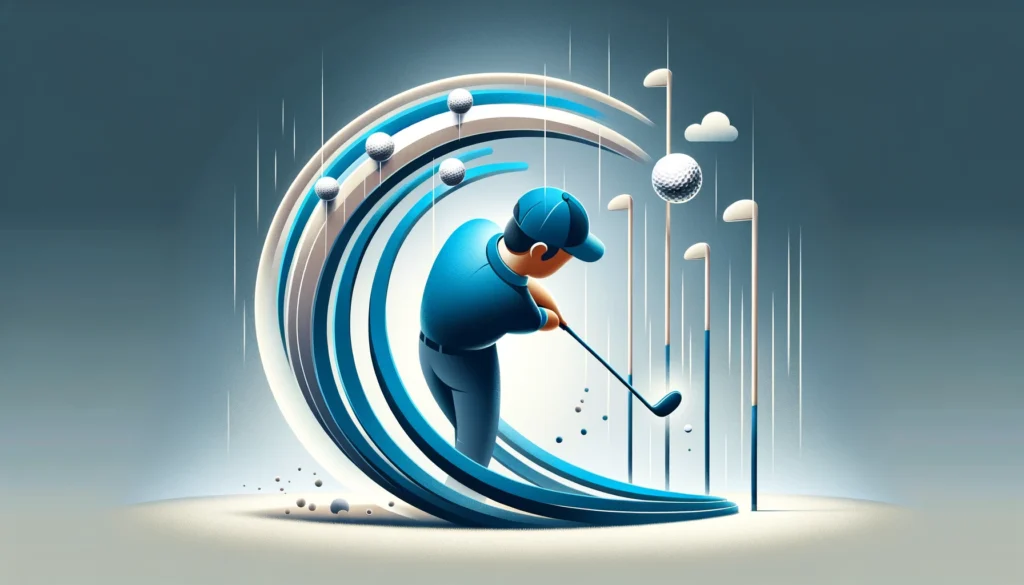
A slice in golf is a common problem that plagues many golfers, particularly beginners and high handicappers.
It is a shot that curves severely from left to right (for right-handed golfers) or right to left (for left-handed golfers), often resulting in the ball landing far off target in the rough or out of bounds.
To fix a slice, it is essential first to understand the common causes behind this frustrating shot. Several factors can contribute to slicing the ball, including an incorrect grip, improper stance and alignment, an outside-in swing path, and an open clubface at impact.
Identifying the root cause of your slice is crucial in determining the most effective corrective measures to implement in your golf swing.
By carefully analyzing your grip, stance, swing path, and clubface angle, you can pinpoint the specific areas that need improvement and focus your efforts on addressing those issues.
Fixing Your Grip to Eliminate a Slice
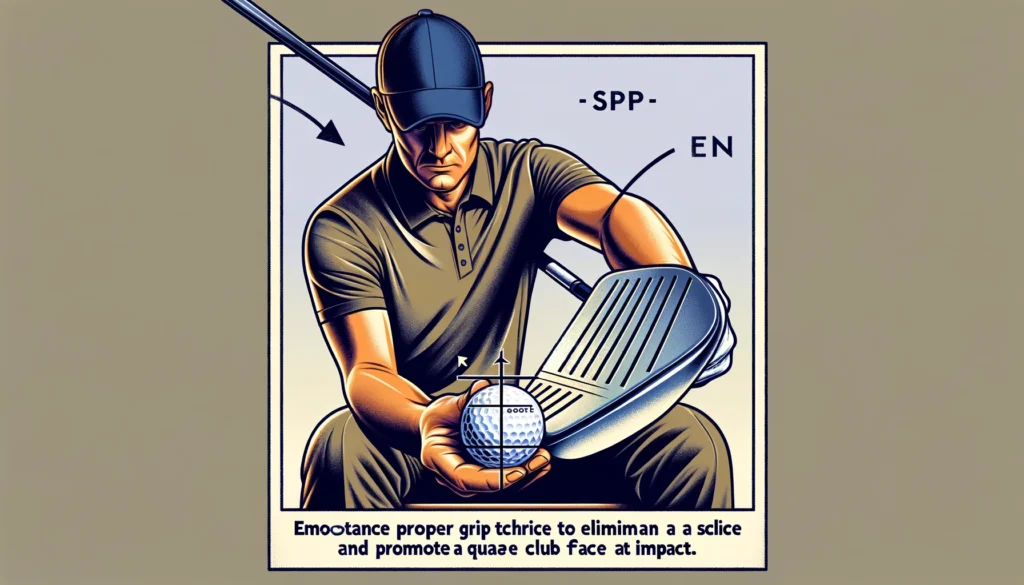
One of the primary causes of a slice is an incorrect grip, which can lead to an open clubface at impact. To promote a square clubface and reduce the likelihood of slicing, it is essential to adopt proper grip techniques.
A neutral grip, where the thumbs and forefingers of both hands form a “V” shape pointing towards your right shoulder (for right-handed golfers), is often recommended.
It is also important to pay attention to your grip pressure, as gripping the club too tightly can cause tension in your forearms and hands, leading to a slice.
Aim for a grip pressure that feels comfortable and allows for a slight hinging of the wrists during the backswing. To practice and reinforce the correct grip, try using a grip trainer or regularly checking your grip in front of a mirror.
You can also perform drills, such as the “glove under the armpit” drill, which helps maintain the proper arm and hand position throughout the swing.
Adjusting Your Stance and Alignment
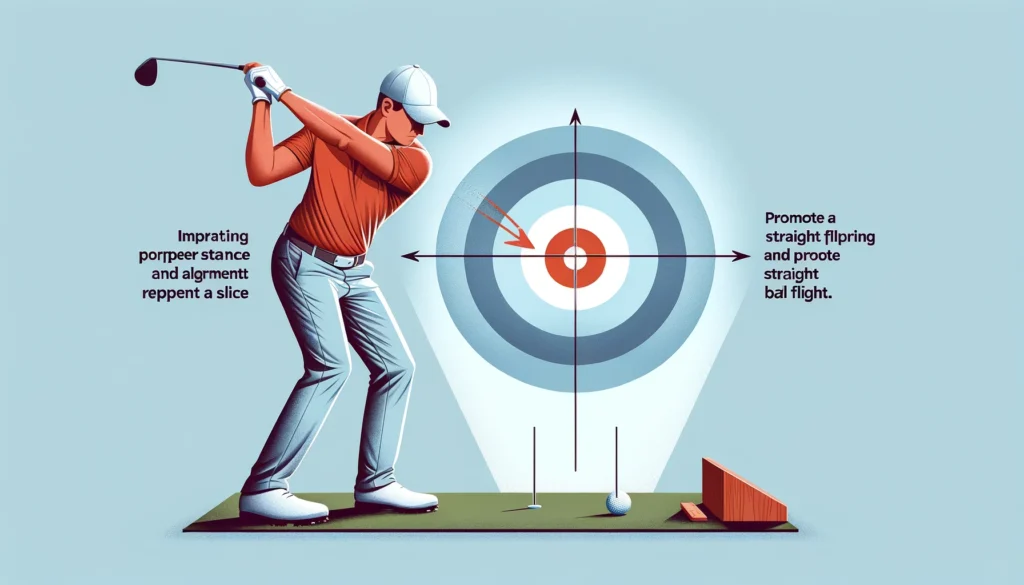
Proper stance and alignment are critical factors in preventing a slice and promoting a straight ball flight. A common mistake that leads to slicing is aiming too far to the left of the target (for right-handed golfers), which encourages an outside-in swing path.
To ensure proper alignment, start by checking your feet, hips, and shoulders. Your feet should be shoulder-width apart, with your toes pointing slightly outward.
Your hips and shoulders should be parallel to your target line, creating a square stance. To practice and improve your stance and alignment consistency, use alignment sticks or golf clubs to create a visual reference.
Place one stick or club along your target line and another perpendicular to it, just outside your toes. This will help you develop a sense of proper alignment and make it easier to identify any discrepancies in your setup.
Correcting Your Swing Path
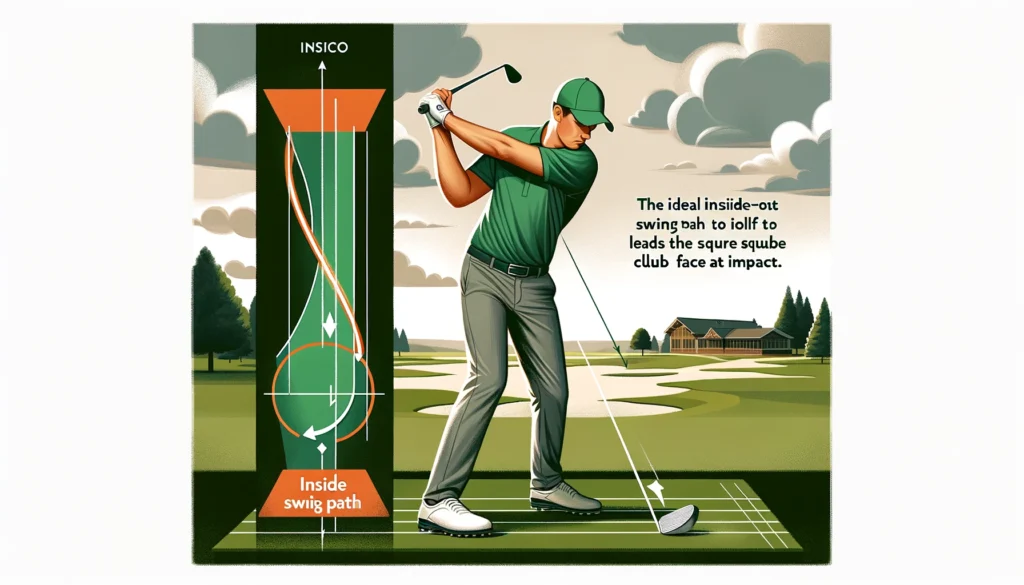
An outside-in swing path is another common cause of slicing, as it causes the clubface to contact the ball with an open face relative to the swing path.
To fix this issue, focus on promoting an inside-out swing path, which allows for a square or slightly closed clubface at impact.
One effective drill to practice an inside-out swing path is the “half-swing drill.” Take your normal stance and make a backswing, stopping when your hands reach hip height.
From this position, swing forward, focusing on bringing the club down from the inside and extending your arms towards the target. Repeat this drill several times to ingrain the feeling of an inside-out swing path.
Another helpful tool for correcting your swing path is the use of alignment sticks or training aids. Place an alignment stick on the ground just inside the ball, pointing towards your target.
As you swing, focus on bringing the club back to the inside of the stick on your downswing, promoting an inside-out path.
Training aids such as the “Explanar” or “Swingyde” can also provide valuable feedback on your swing path and help you develop a more consistent, slice-free swing.
Squaring the Clubface at Impact
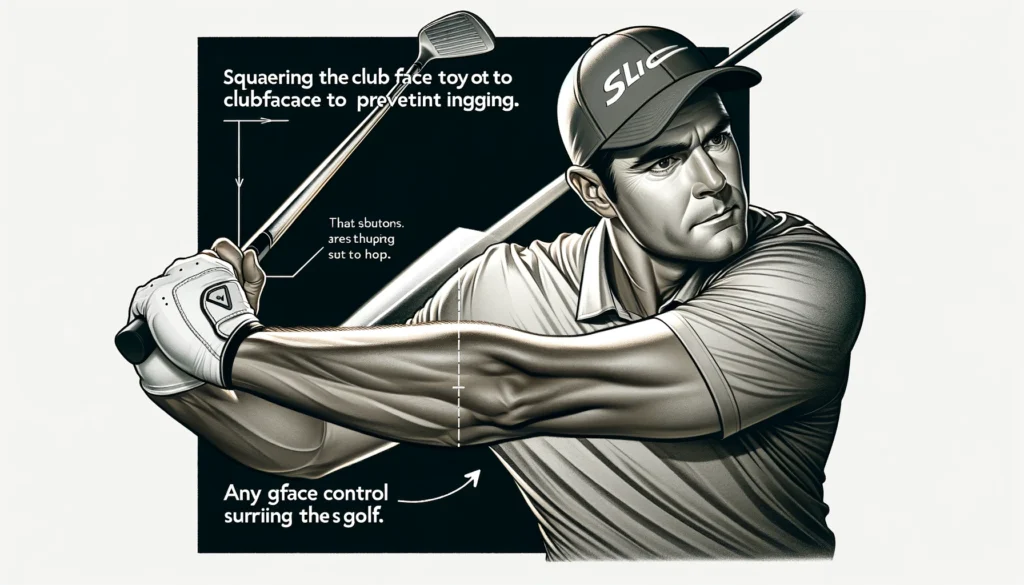
An open clubface at impact is a significant contributor to slicing the ball. To square the clubface and promote a straighter ball flight, it is essential to practice drills that focus on clubface control.
One effective drill is the “toe-up” drill. At address, set up with the clubface slightly open, so that the toe of the club is pointing upwards.
As you make your backswing, focus on maintaining this toe-up position. On the downswing, work on rotating the clubface to square at impact, feeling the toe of the club turning down towards the ground.
Another helpful tool for monitoring your clubface angle is impact tape or face spray. These products leave a visible mark on the clubface at impact, allowing you to see exactly where the ball is striking the face.
If the marks consistently appear towards the heel of the club, it indicates an open clubface. Use this feedback to make adjustments in your grip and swing until you see a more centered impact pattern.
Strengthening Your Golf Muscles
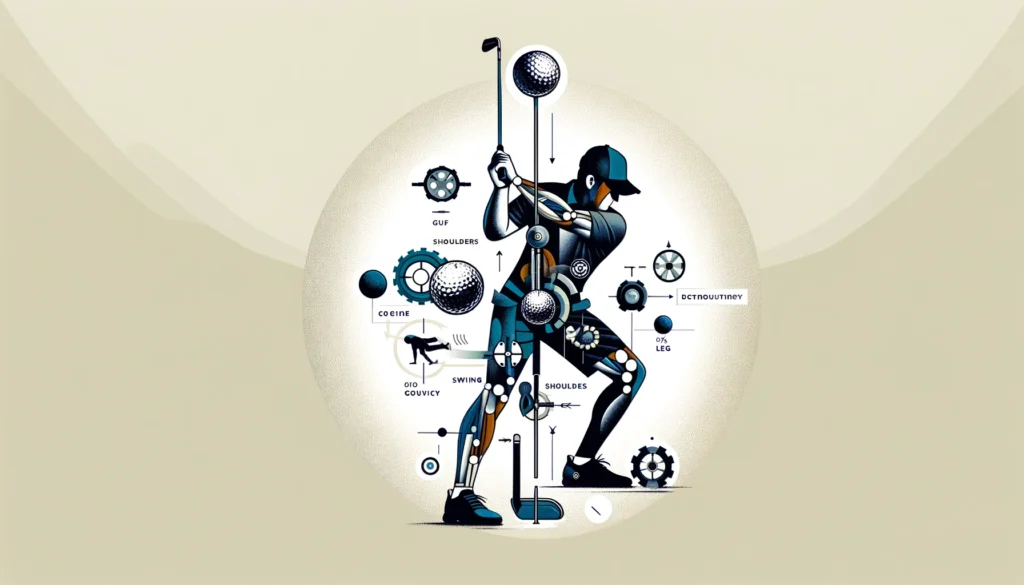
Building strength and stability in key muscle groups can help prevent slicing and improve your overall golf swing.
Focus on exercises that target your core, shoulders, forearms, and wrists, as these areas play a crucial role in maintaining clubface control and promoting a square impact position.
Core exercises such as planks, Russian twists, and bicycle crunches can help improve stability and rotational power. Shoulder exercises like external rotations and lateral raises can help strengthen the muscles responsible for maintaining a square clubface.
Forearm and wrist exercises, such as wrist curls and farmer’s walks, can improve grip strength and clubface control.
Incorporating golf-specific training into your routine, such as using weighted clubs or resistance bands, can further enhance your muscle memory and swing mechanics.
By strengthening these key muscle groups, you’ll be better equipped to make the necessary adjustments in your swing to eliminate your slice and hit more consistent, accurate shots.
Mental Strategies for Overcoming a Slice
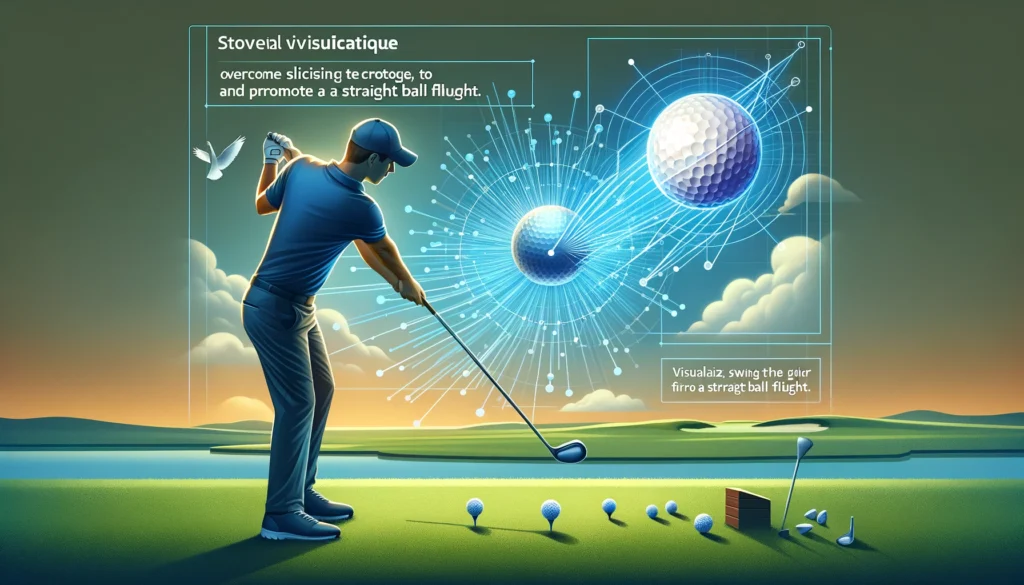
In addition to the physical adjustments needed to fix a slice, it’s important to address the mental aspects of the game. Visualization techniques can be a powerful tool in promoting a straight ball flight.
Before each shot, take a moment to close your eyes and visualize the ball flying straight towards your target. Focus on the sensation of a square clubface at impact and the feeling of a smooth, inside-out swing path.
Staying relaxed and focused during your swing is also crucial in preventing a slice. Tension in your body, particularly in your arms and hands, can lead to an open clubface and an outside-in swing path.
Take a deep breath before each shot and focus on maintaining a smooth, relaxed tempo throughout your swing. Building confidence through practice and positive self-talk can also help you overcome the fear of slicing.
Celebrate your successes, no matter how small, and approach each shot with a positive, confident mindset. Remember that every golfer, even the pros, struggles with a slice at some point in their career.
By staying patient, persistent, and focusing on the process of improvement, you’ll gradually build the skills and confidence needed to conquer your slice and take your golf game to the next level.
When to Seek Professional Help

While many golfers can successfully fix their slice through self-practice and drills, sometimes it’s beneficial to seek the guidance of a professional golf instructor.
Golf lessons can provide personalized feedback and insights into the specific causes of your slice, helping you identify and correct any flaws in your technique.
A skilled instructor can analyze your grip, stance, alignment, and swing mechanics, offering targeted drills and exercises to address your unique challenges.
When choosing a golf instructor, look for someone with experience in teaching players of your skill level and a track record of helping golfers eliminate their slice.
Read reviews, ask for recommendations from fellow golfers, and don’t be afraid to ask questions about an instructor’s teaching philosophy and approach.
Combining professional instruction with dedicated self-practice can accelerate your progress and help you develop a more consistent, slice-free swing.
Remember that fixing a slice takes time, patience, and persistence. Celebrate your small victories along the way and trust in the process of continuous improvement.
Conclusion
In conclusion, fixing a slice in golf requires a comprehensive approach that addresses the various factors contributing to this common problem.
By understanding the causes of a slice and implementing targeted strategies to correct technique, golfers can develop a more consistent, slice-free swing.
Focusing on grip adjustments, stance and alignment drills, swing path corrections, clubface control exercises, strengthening key golf muscles, and incorporating mental strategies can help golfers overcome their slice and improve their overall performance on the course.
While self-practice and drills can be effective, seeking professional instruction can provide personalized insights and accelerate the learning process.
Remember that fixing a slice is a journey of continuous improvement, and with persistence, patience, and a commitment to proper technique, any golfer can learn to hit straighter and more accurate shots.
